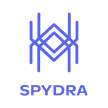
As blockchain technology continues to evolve, businesses are exploring the potential of using private blockchains for their operations. Hyperledger Fabric is a popular private blockchain platform that offers a secure and flexible solution for enterprise applications. In this comprehensive guide, we will explain what Hyperledger Fabric is, how it works, and the benefits and limitations of using this platform for private blockchains.
Introduction to Hyperledger Fabric
Hyperledger Fabric is an open-source private blockchain platform that was developed by the Linux Foundation. It is designed to provide a secure and flexible solution for enterprise applications, allowing businesses to create their private blockchain networks. One of the key features of Hyperledger Fabric is its modular architecture, which allows for customization and flexibility in the development of blockchain applications.
What is a private blockchain?
A private blockchain is a type of blockchain that is only accessible to a select group of participants. Unlike public blockchains, which are open to anyone, private blockchains are designed for use within organizations or specific industries. Private blockchains offer a higher level of security and control compared to public blockchains, making them a popular choice for businesses that require privacy and confidentiality.
Differences between Public and Private Blockchains
Public blockchains, such as Bitcoin and Ethereum, are designed for use by anyone and are not controlled by a single organization. Transactions on public blockchains are validated by a network of nodes, and anyone can participate in the network. Private blockchains, on the other hand, are controlled by a single organization and are designed for use within that organization or a specific industry. Transactions on private blockchains are validated by a select group of participants, which offers a higher level of security and control.
Benefits of using Hyperledger Fabric for Private Blockchains
Hyperledger Fabric offers several benefits for businesses that want to create their own private blockchain networks. One of the key advantages of using Hyperledger Fabric is its modular architecture, which allows for customization and flexibility in the development of blockchain applications. Hyperledger Fabric also offers a high level of security and privacy, making it a popular choice for businesses that require confidentiality in their operations.
Another benefit of using Hyperledger Fabric is its scalability. Hyperledger Fabric can handle large volumes of transactions, making it suitable for enterprise applications that require high throughput. Hyperledger Fabric also offers a flexible consensus mechanism, allowing businesses to choose the most appropriate consensus algorithm for their application.
Hyperledger Fabric Architecture
Hyperledger Fabric is designed with a modular architecture, which allows for customization and flexibility in the development of blockchain applications. The Hyperledger Fabric architecture consists of several components, including:
Peer nodes
Peer nodes are nodes that maintain a copy of the ledger and execute transactions. In Hyperledger Fabric, there are two types of peer nodes: endorsing peer nodes and committing peer nodes. Endorsing peer nodes validate transactions and generate endorsements while committing peer nodes to update the ledger with validated transactions.
Orderer nodes
Orderer nodes are responsible for ordering transactions and ensuring that they are added to the ledger in the correct order. Orderer nodes use a consensus algorithm to agree on the order of transactions.
Membership service provider (MSP)
The MSP is responsible for managing the identity of participants in the blockchain network. The MSP issues certificates and manages the public key infrastructure (PKI) for the network.
Chaincode
Chaincode is the smart contract language used in Hyperledger Fabric. Chaincode is written in Go, Java, or other programming languages, and is executed by the peer nodes.
Components of a Hyperledger Fabric Network
A Hyperledger Fabric network consists of several components, including:
Channel
A channel is a private communication channel between a set of participants in the network. Channels allow participants to transact privately, without interference from other participants in the network.
Ledger
The ledger maintains a record of all transactions that have been executed on the network. The ledger is maintained by the peer nodes in the network.
Smart contract
Smart contracts are self-executing contracts that automate the execution of business logic. Smart contracts are written in chaincode and can be executed by the peer nodes in the network.
Setting up a Hyperledger Fabric network
Setting up a Hyperledger Fabric network involves several steps, including:
Step 1: Install and configure the Hyperledger Fabric software
The first step in setting up a Hyperledger Fabric network is to install and configure the Hyperledger Fabric software. This involves installing the necessary software packages and configuring the network settings.
Step 2: Create the network topology
The next step is to create the network topology. This involves defining the peer nodes, orderer nodes, and other components of the network.
Step 3: Define the channel
The next step is to define the channel. This involves defining the participants in the channel and the transactions that can be executed on the channel.
Step 4: Install and instantiate the chaincode
The final step is to install and instantiate the chaincode. This involves writing the chaincode and deploying it to the peer nodes in the network.
Smart contracts in Hyperledger Fabric
Smart contracts are self-executing contracts that automate the execution of business logic. Smart contracts in Hyperledger Fabric are written in chaincode, which is the smart contract language used in Hyperledger Fabric. Chaincode is executed by the peer nodes in the network and can be written in Go, Java, or other programming languages.
Smart contracts in Hyperledger Fabric offer several benefits, including automation of business processes, reduction of fraud and errors, and increased transparency and accountability. Smart contracts can also be used to create new business models and revenue streams.
Hyperledger Fabric Use Cases
Hyperledger Fabric has been used in several industries, including finance, healthcare, and supply chain management. Some of the popular use cases for Hyperledger Fabric include:
Supply chain management
Hyperledger Fabric can be used to create a private blockchain network for supply chain management. This can help to reduce fraud and errors, increase transparency and accountability, and improve efficiency in the supply chain.
Healthcare
Hyperledger Fabric can be used to create a private blockchain network for healthcare applications. This can help to improve patient privacy and security, reduce healthcare fraud, and improve the efficiency of healthcare operations.
Finance
Hyperledger Fabric can be used to create a private blockchain network for financial applications, such as payment processing and trade finance. This can help to reduce fraud and errors, improve efficiency, and increase transparency and accountability.
Conclusion
Hyperledger Fabric is a powerful private blockchain platform that offers several benefits for enterprise applications. With its modular architecture, high level of security and privacy, and flexible consensus mechanism, Hyperledger Fabric is a popular choice for businesses that require privacy and confidentiality in their operations. While there are some challenges and limitations to consider, Hyperledger Fabric offers a secure and flexible solution for private blockchains.






Comments
There are no comments for this story
Be the first to respond and start the conversation.